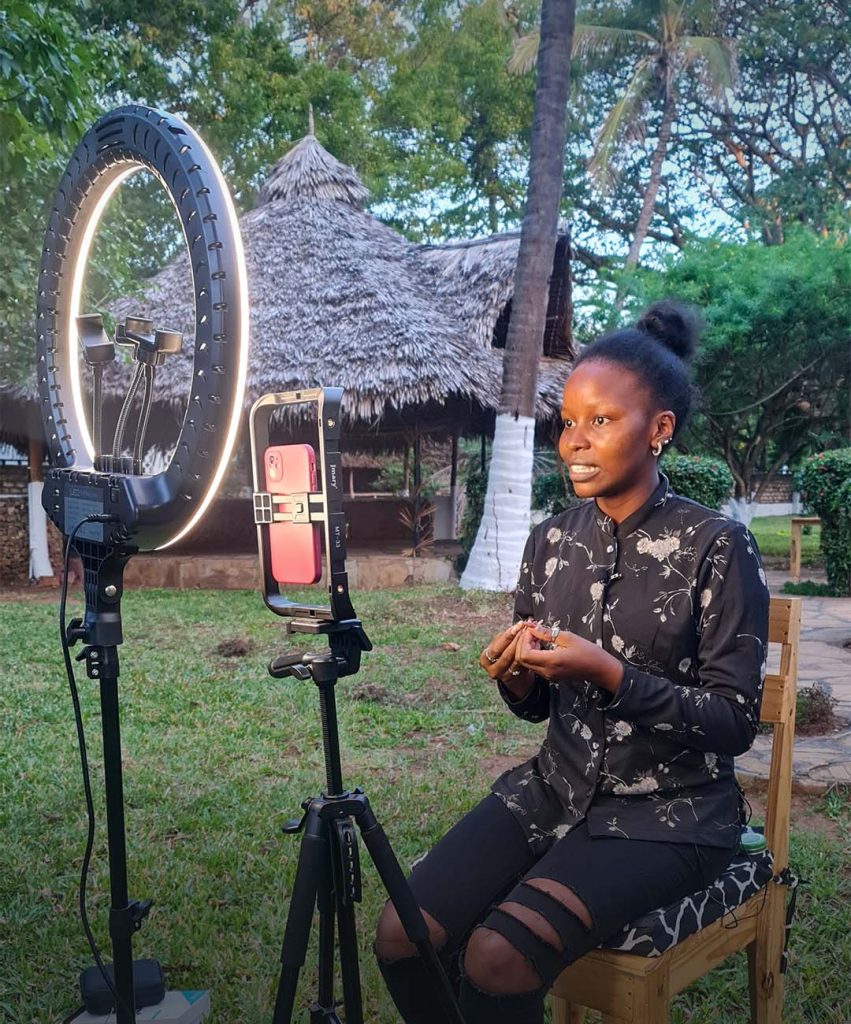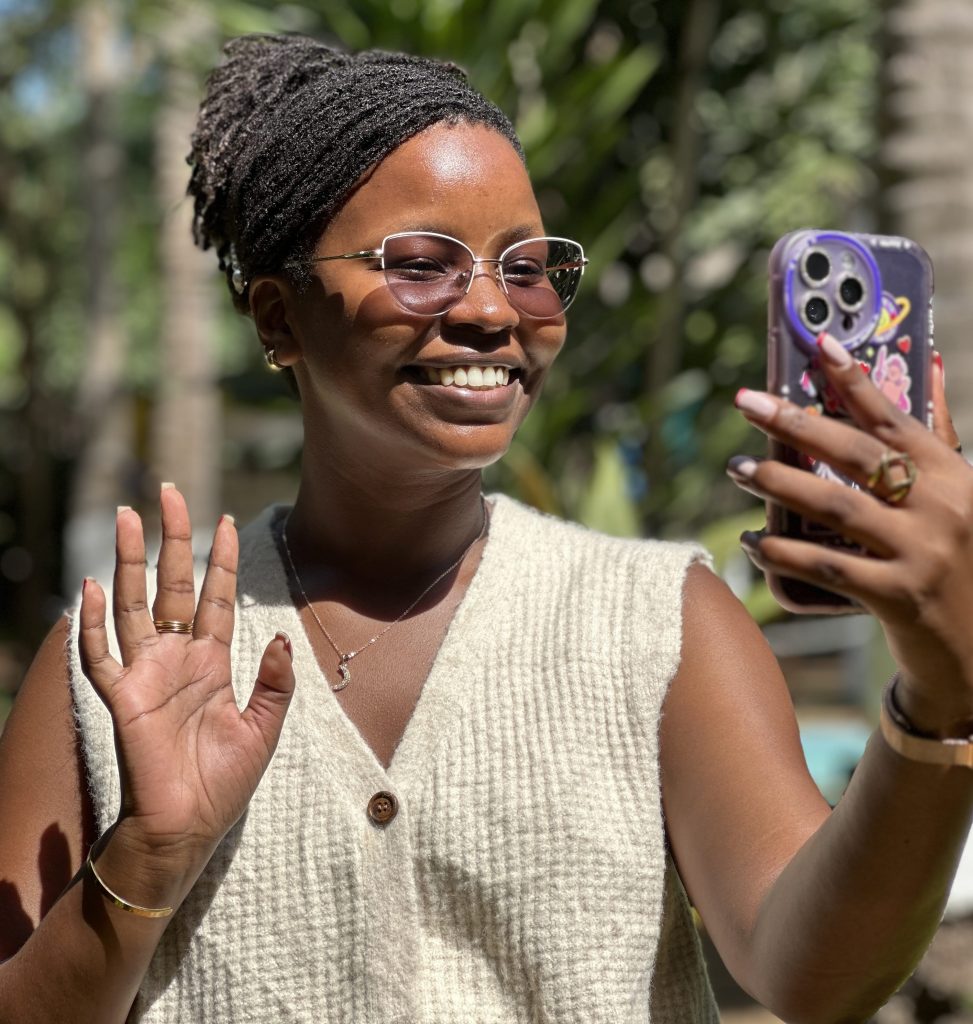Imagine this: you are busy doing what you do then someone walks up to you and asks: “Are there any photographers in Nairobi? Where can I find them?” Perhaps, like me, you would first look at the person in absolute amazement to the initial question about the existence of photographers in such a modern city, then, you would proceed to carefully explain to them that the concept of photography is well known around here and, is actually practised by not one, two, ten or even a hundred, but thousands of professionals. Then, you would point them to a few professionals and remain transfixed at the insolence.
In Malindi, those two questions are asked every day by people who come here and happen to need the service. Why do they ask? Because unlike Nairobi and other big towns in Kenya, Malindi is relatively small and majorly rural. When you come here, it is not apparent that many of the products and services you are used to in big bustling cities are available [in the quality you are used to]. And you would not be blamed for thinking this way, because this is what happens when some people/places are marginalised
When people are excluded, their value is excluded together with them. And this has especially been made vivid to us through monthly meet-ups that we have been having with various groups of youth in the creative space, here in Malindi. We have seen how disempowerment has affected their confidence and their ambition, and how they have now been boxed into content consumption even though they could also be creators. Since the start of the year, we have met with photographers, musicians and other artists to try and figure out two key things:
- How they experience life as creatives living in a rural setting.
- What value we can provide that enables them to make movements inwards — from the periphery of the creative industry to the centre stage.
We call these meetings Kibaraza (a Swahili word that means ‘a place where people meet’). Apart from giving us insight into these two questions, Kibaraza is a platform for these creatives to connect with each other.
The Challenge With Photographers in Malindi.
The challenge with photographers in Malindi is that they are underexposed; their mental models are not ‘updated’. As photography evolves, they are not evolving with it. When photographers determined what modern-day photography looks like, these guys were left trailing behind. Yet, it is not by choice. Inequality and discrimination have played major hands. And unfortunately, as the world moves, the gap widens.
We met with 22 photographers in our first Kibaraza meet-up, all of who were aged between 19 and 30. They were candid enough to chat with us about the experience of their work and how that affects their personal lives. These are some of the observations and learnings that we made:
- There were no girls at the meetup. When we asked why, faces turned blank in realisation that it had not occurred to them that they did not have girls in their photography circles, and it has not bothered them why this is the case. When we probed further, we were informed that girls would not be easily found doing photography because their responsibilities are primarily at home (mostly doing house chores).
- Everyone works in silos, very little collaboration happens. As we were getting introduced to each other, we were surprised to learn that this was their first-ever meet-up where more than 3 photographers showed up! Despite having a WhatsApp group with 28 members, whenever they make attempts at organising something that brings them together, everyone claims unavailability. Additionally, we observed that of the 28 in the WhatsApp group, only a handful of them were friends — most of them were meeting each other for the first time in this meet-up!
- Photography is their main source of income, even though it barely brings any. A majority of them started photography as a hobby, mostly inspired by other photographers, the beach, the ocean and the rich culture of Malindi. They then persisted with it, and despite its low demand and low income, it continues to be the main job for about 70% of them. They get occasional gigs (mostly weddings & family shoots) that meet their immediate needs (rent, food, utilities and clothes), but nothing more to allow them to do something extra like save, upgrade their gear or even upgrade their skills.
- Lack of capacity building avenues. Related to point “c” above, we have found that there is only one small photography school in Malindi that is rather empty and somewhat under-equipped (it does not have enough equipment, and those that are there are outdated). We figure that this may be the case because firstly, money is scarce for youths in Malindi and the fees involved are outcompeted by other pressing demands, and secondly, due to the low intake, the school does not make enough money to meet its operational costs let alone invest in modern equipment.
- Most of them are self-taught. Because of points “c” and “d” above, those youths with a passion for photography look to learn from their friends with cameras. All but one of the photographers in the meetup were self-taught. It is not uncommon to find a group of boys gathered together at Malindi’s public park (known as Buntwani) teaching each other how to operate a camera. Consequently, there are just about 10 semi-pro photographers; the rest are amateurs.
- Keeping up with the latest trends. All the photographers at the meetup had a Facebook and Instagram account where they regularly posted their works. We wanted to further know if they keep up with the latest photography trends that they see on social media, so we asked them to name at least 5 well-established photographers in Kenya. It was surprising to see them struggle to come up with the names. Only the semi-pros managed to collectively name about 4; the rest could not. When we probed further and asked what kind of photography those they mentioned do, we found that they could not answer. We established that not many of them spend a lot of time online because of issues such as not having smartphones, internet access or even, in some cases, not knowing exactly how to fully leverage social media to gain more experience and visibility.
- Scarce professional equipment. None of the photographers at the meet-up owns a high-end DSLR. In fact, about 70% of them do not own any cameras. Additionally, only a few of them own edit suites, high-speed cards, hard drives, good strobe lights etc. What happens is that they rent/borrow from those who have. This, we think, may explain why many of the equipment we have managed to see so far is creaky, old, rusty and very used.
- Business is in Studio Shoots. According to this group, studio shoots are the most common type of shoots. However, there are only two photography studios in the entire Malindi that they know of! To use these studios, one is required to hire at a fee (mostly 1k for an hour). Those who need to use the studio but cannot raise the money end up missing out on gigs.
- Issues of business etiquette. How one presents themselves determines how they are perceived. As a consequence of low exposure and literacy, our photographers may not understand, or lack the wherewithal to groom themselves as they should. We have also noted that they struggle with good business practices such as how to communicate with a client, how to negotiate prices, how to prepare their portfolio etc. Indeed, none of the photographers has a website! As they are, big corporates and other clients have a low perception of them and so they end up losing business to photographers from Mombasa and Nairobi.
- They mean business, but they don’t know how to do it. We could tell that the main goal for most of these creatives is to earn a sustainable living from their work. But because of the issues listed above and others like low literacy levels and a desperation for clients, they result to unhealthy practises like undercutting each other. This not only means that there is no standard photography rate around here, but also that they are exposed to being exploited by clients. Shockingly, sometimes clients may as little as Ksh1,000 ($10) for a one hour shoot! In places like Nairobi, it is somewhere between Ksh 7,000 ($70) and Ksh 30,000 ($300).
What’s the end goal?
Our goal is to empower creatives in rural Kenya. We look to bring rural photographers to a place where they are valued and paid for this value. Further, we hope to bring them to a place where they are playing a role in shining a light on social issues in their communities and participating in initiatives that foster active participation in governance.
We shall achieve this by partnering with other organisations and photographers to capacity build rural-based photographers (currently, Malindi), in order to expand their memories and improve the quality of their ideas and output. We are looking into teaching them how to be better photographers, how to collaborate within themselves and with other creatives, how to package themselves, how to do business and others. We shall find ways of exposing them to more sophisticated equipment, techniques and ideas, so that they make money for themselves and be active community members who use their talents to raise awareness on issues.
We would like to hear what you think about this. If you have any ideas on how we might be able to bring rural photographers to the fore, please let us know in the comments section below.


